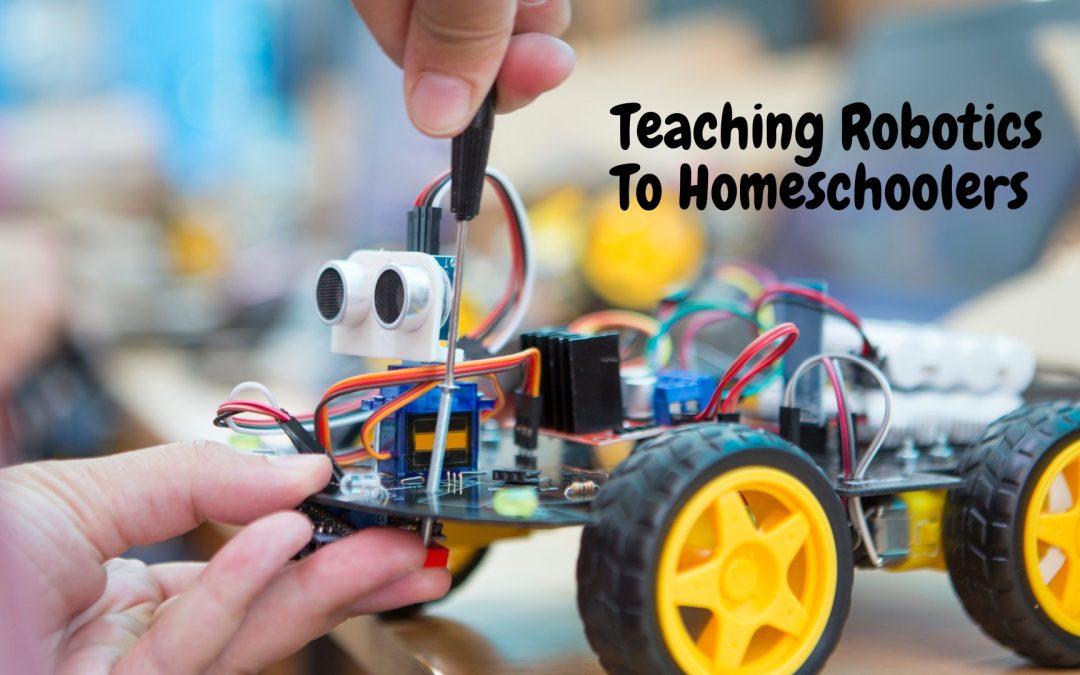If you’re a homeschool parent looking for a “new direction” for your curriculum, robotics offers a great way to do something totally different and generally fascinating to most kids.
The need to study robotics isn’t going anywhere. It’s here to stay. Robotics has, thus far, done more good than harm in the world, so adapting to the trend and researching its learning capacity might be the best thing you can do for your homeschooler’s academic journey.
None of us are complete strangers to robotics. We use robots in our home – as in Roomba automatic vacuum cleaners. If you have a swimming pool, you may be cleaning the pool with a robotic pool cleaning tool. In manufacturing, robots have been used to complete monotonous factory jobs that human workers used to do. Robots can also be adapted to complete tasks that require high level precision, such as making small computer components.
Jobs that are safer using robotics include bomb detection, exploring volcanoes and deep caves, and numerous technical tasks in outer space. If you’ve been unlucky enough to require surgery lately, that surgery procedure was perhaps done by a robot, or the real-life surgeon may have been assisted by a robot.
Robots will continue to be needed in various forms as our society becomes more technologically driven. And human beings will be needed to build those robots and program their activities – at least until robots learn how to recreate themselves!
KIDS LOVE ROBOTS!
Your homeschool student will have tons of fun exploring various real-world challenges using robotics. The hands-on study of robotics has the potential to get students excited about the everyday world around them.
WHY TEACH ROBOTICS TO HOMESCHOOLERS?
Even though your homeschooler may not yet have computer programming experience, you can still engage yourself and your child in the amazing journey of robotics. It’s all about starting from scratch! The good news is, playing with robots will not only provide high level fun and entertainment for your students (and for the teacher!), but they will also gain expertise in:
- Digital literacy,
- Computational thinking,
- Debugging,
- Creativity,
- Spatial imagination, and
- Coding.
All these skills are in high demand today and will remain so into the foreseeable future. There are also immediate benefits to learning robotics such as:
- Developing an exciting interest in science,
- Expanding your child’s cognitive abilities,
- Teaching your child (and yourself!) the value of patience,
- Learning there are rewards for determination, and
- Motivating kids to learn more in fields related to robotics.
Gaining the skills related to robotics and the benefits attached to learning robotics will expand your child’s learning capacity and assist them in attaining academic success.
YOU CAN LEARN TO TEACH ROBOTICS
It’s true that learning robotics is a complex task. During the learning journey, you and your child will learn about circuits, sensors, and coding. To get to this knowledge level, you and your homeschool student will need some basic skills:
- Touch keyboarding – A style of typing that depends on muscle memory of exactly where the keys are located on the computer keyboard rather than looking at the keyboard as you type. (One-handed touch typing can work just as well as two-handed touch typing.)
- Routine knowledge of computer tasks such as opening files and downloading programs.
The most effective way to learn robotics at home is to:
- Set a learning schedule – assign yourself and your student specific learning goals and attach “achievement dates” to those goals.
- Purchase a top-of-the-line robotics curriculum package,
- Follow lesson plans specifically, and
- Purchase a robotics kit that your child agrees looks like a fun project.
BENEFITS TO STUDENTS
Learning about robotics can be beneficial to your homeschool student in many ways.
- Creative Thinking – Robotics is one of the few learning areas where your students can enjoy both creativity and fun! Kids will enjoy the amount of control they’re able to exercise over the learning process because they are the “creator” of the final product.
- Improved Concentration and Attention – Robotics is a learning process that allows students to use actual physical skills, which can increase their desire to “be in the lesson.”
- Preparation for the Future – Advanced technologies are going to continue to shape our future world. The need for students to be prepared for future technological changes and the new economy those changes will create is urgent.
- Technical Skills – Understanding how bots work and how to do some actual programming will benefit students as they move into the future world of work.
- Teamwork – Understanding robotics requires a wide variety of skills and talents. Pulling all these skills and talents together to complete a technical task helps create teamwork and cooperation experiences for students.
- Fun – Learning how to build and use robots is FUN and actively prepares your homeschool student(s) for the future.
AGE REQUIREMENTS FOR LEARNING ROBOTICS
Some basic skills are necessary for your student to be ready to begin the study of coding and robotics, including:
- Reading,
- Counting,
- Understanding directions and instructions, and
- Being able to focus on a single task for more than 30 minutes.
Your four-year-old might have a tough time learning robotics. But kids older than eight or nine years old will probably be able to understand and complete at least simple robotics tasks.
When you’re researching robotics curriculum and kits, look for an official age recommendation. Remember that the age listed might not be accurate to all kids, so before you purchase robotics materials, read the published product reviews.
CLOSING
Don’t be afraid to start learning robotics. Unless you’re working in a technical field or are a technical genius, you’re going to need help. Explore available interactive online robotics kits for your homeschoolers. (For starters, check out the list of RESOURCES, below.) If you have the time, learn some programming skills yourself and always find ways to interact with, and get help from, expert robotics educators.
RESOURCES
Homeschool Robotics Guide for Parents – Learn Robotics
The Ultimate List of Free STEM Resources for Homeschooling (codewizardshq.com)
Five Reasons to Teach Robotics in Schools – The Tech Edvocate
Homeschool Robotics 101 (robocamp.eu)
Coding for Homeschoolers: Curriculum & Free Programs (create-learn.us)
4 Ways to Add Robotics to Your Homeschool – Dual Credit at Home

